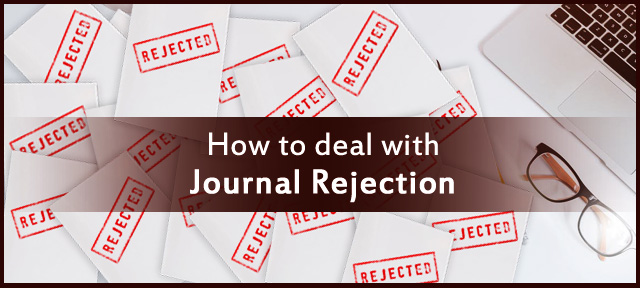Getting rejected by a journal is an inevitable part of academic life. While it is true that every author has faced rejections even at advanced stages of their career, it is also true that any rejection letter is extremely demotivating and it hurts. It is easy to say that one has to accept rejection and move on; it is altogether a different trick on how to move on.

So, here are some key tips on how to deal with rejection and move on:
Understand the reason for rejection: there are numerous reasons for rejection. The publishing world is extremely competitive and there are more rejections than publications. However, it is important to understand the reason why one got rejected. Read the rejection letter carefully. Usually, all journals clearly state why they rejected a certain article and also give hints of the stage at which it was dropped. Was it dropped at the initial level because the editor did not think your article fitted the remit of the journal? Did the reviewers suggest rejection citing some critical flaw? You need a course correction depending on identifying the reason for rejection.
Develop on manuscript writing: One of the most common reasons for rejection is a bad manuscript. This may mean poor language, poorly structured paper, not following the journal guidelines, not following proper formatting and referencing, etc. This common mistake is also the most frustrating one. It is strongly advised to take professional help in manuscript writing, especially the first few times, to save on time and heartaches.
Identify technical errors: it is very useful to read and heed comments and suggestions from the journal’s peer reviewers. Reviewers tend to hold nothing back when assessing papers and often seem very harsh. However, that honest feedback could help you polish your manuscript which you can resubmit to the same journal or to a different publication. Read reviewers’ comments carefully and try to understand where you are being held at fault: Was your statistical analysis flawed? Was your literature review insufficient? Were your hypotheses not definitive enough?
Fine-tune your outcome reporting: outcome reporting is the crux of any scientific article and thus this section has to be its strongest point. For instance, medical writers and journals are typically more interested to publish positive trials that demonstrate either a large treatment effect for a new therapy or non-inferiority trials that are the equivalence of two approaches to treatment. Your outcome reporting, therefore, has to be on those lines. You may have to re-run your analyses using a different methodology, or frame your arguments or place your evidence differently to make the outcome reporting more robust and ensure your manuscript is chosen for publishing.
Resort to Plan B: it is always suggested to have alternatives set before submitting a manuscript for publishing. You should have options for other journals you can approach along with re-submitting it to the journal that rejected it. Today, there are newer avenues like open journals that are more accommodative in their approach and perhaps they suit you better!
The best way to deal with journal rejection is to act on it smartly. Take it as a learning curve that only helps you become sharpen your skills.

